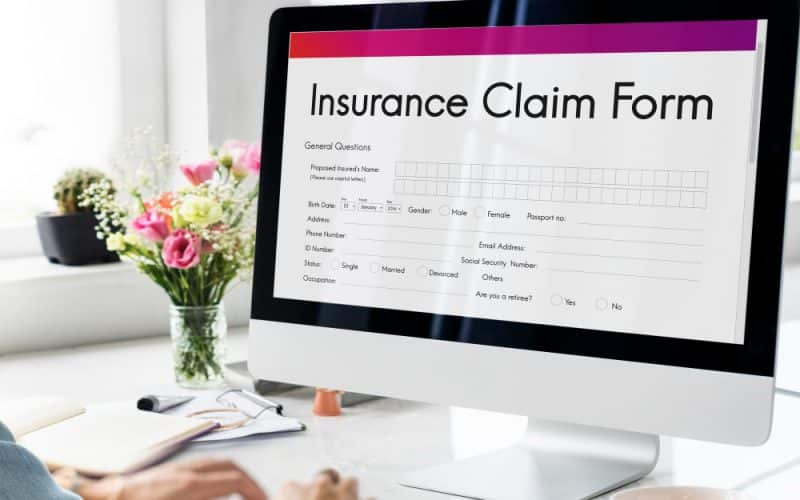Small business insurance is more important than ever, thanks to the array of modern risks business owners face. Whether you own a brick-and-mortar shop or you are an online-based contractor, finding and buying the right business insurance is essential to protecting your operations from the unexpected.
However, with all of the different types of insurance out there, as well as providers to choose from, you might be wondering exactly how to get business insurance.
What is small business insurance?
Small business insurance, sometimes called commercial insurance, helps protect a business’s assets, property, and income. A business owner’s policy (BOP) is the most common insurance product for small businesses, according to the Insurance Information Institute (III).
A BOP typically includes three basic types of coverage to help protect a business: business property coverage, general liability coverage, and business interruption coverage.
If you are a small business owner, you may also be able to buy additional insurance coverages to customize your policy based on your business’s specific needs. These additional coverages may include commercial auto coverage, errors and omissions coverage, key employee coverage, and more.
What classifies as a small business?
The U.S. Small Business Administration (SBA) defines a small business as an independent business that has fewer than 500 employees. However, this definition can vary by industry.
For insurance purposes, only small- to medium-sized businesses that meet certain requirements are eligible for a BOP, according to the III. Insurers may consider several factors when assessing whether a business is eligible for a BOP, which include:
- Ownership structure: The ownership structure of a business can also impact its classification as small, according to the SBA. In some cases, insurance providers may consider factors such as whether the business is independently owned and operated or part of a larger corporate entity.
- Number of employees: One of the primary factors used to classify a business as small is how many people it employs. Typically, businesses with fewer than a certain number of employees are considered small. The threshold is determined by the insurance provider and can range from a handful of employees to several hundred, depending on the industry and the specific insurance policy.
- Annual revenue: In addition to the number of employees, the SBA considers the annual revenue of a business when determining its size. Similarly, insurance providers may set a maximum revenue threshold for small businesses.
- Industry classification: Certain industries have their own unique standards for defining small businesses. For example, the SBA sets industry-specific size standards based on the number of employees or annual revenue. These standards help determine eligibility for government programs and contracts.
It’s worth noting that the definition of a small business may differ among insurance providers, so it is essential to carefully review your policies and consult with your insurance providers to ensure you meet the specific requirements for coverage.
How to get small business insurance
Buying small business insurance might seem intimidating at first — especially if you are a new business owner. However, the process can be much more approachable if you break it down into individual steps:
Review your risks
First and foremost, you’ll need to decide which type, or types, of commercial insurance you need. From the all-encompassing liability insurance to the more specialized cyber liability insurance, there are a variety of coverage options to choose from. The policies you need will largely be unique to your business.
Therefore, to help you decide which types of insurance you need, you can start by evaluating your risks as a business.
Evaluate your risks
Although some risks will be unique to your business, location and industry, in general, you can think about:
- What kind of accidents your business might be prone to
- The kind of natural or unexpected disasters that might affect your business
- Staff in your business. Do you have employees? If so, you’ll need to protect them and your business with certain policies.
- The kind of lawsuits your business could face. For instance, if you manufacture your own products, you’re more likely to face a business lawsuit for product defects than other types of businesses.
Once you have a better sense of the risks that your business faces, you’ll be ready to look into the different types of commercial insurance and decide which ones your business needs.
Choose the right type of insurance
When it comes down to it, there are numerous insurance types to choose from, but you might start with some of the most common options:
- General liability insurance: This is one of the most common types of insurance and all businesses should invest in this type of coverage. General liability insurance protects your businesses from claims of bodily injury, property damage or personal injury by a third party.
- Workers’ compensation insurance: If you have employees, workers’ comp insurance is required — although the details vary by state. Workers’ comp insurance protects your employees in case they become ill or injured on the job.
- Commercial property insurance: Commercial or business property insurance protects your equipment, office space, inventory and more from loss or damage. This type of policy will be particularly important for businesses that operate out of a brick-and-mortar location.
- Business owner’s policy: A BOP combines multiple types of commercial policies into a single more affordable bundle. Business owner’s policies typically include general liability insurance, commercial property insurance and business interruption insurance; however, many providers allow you to customize these policies to add other types of coverage as well.
- Professional liability insurance: This insurance, sometimes referred to as errors and omissions insurance, protects professional-service businesses (designers, consultants, accountants, etc.) from claims of negligence or other service-related errors.
While there are a number of different types of commercial insurance, not every business will require the same coverage. The policies you need will be unique to your business. Moreover, when you’re first figuring out how to get business insurance, you can always start simple, with a general liability policy or a BOP, and opt for additional coverage later on.
Gather documentation
Gather all the documentation and business information you need to apply for insurance. The information you’ll need to supply for an insurance includes:
- Your business location
- The number of employees at your business
- Your gross sales for the previous year
- Your total payroll
- A list of business assets
In addition to the documentation listed, you should also be prepared to answer questions about the age of your office building, the equipment and tools you use for your business and details about your office furniture.
Shop around and get quotes
Once you have a better sense of what kind of insurance your business needs, your next step will be to start shopping. You’ll want to get business insurance quotes from several companies so that you’ll be able to compare multiple options and find the best deal for your business.
So, how do you go about this part of the process? When it comes down to it, you have three avenues you can take:
Contact individual providers on your own
If you have simple insurance needs or already have a provider in mind, there’s nothing wrong with contacting providers directly. You get to learn about what they offer, receive a quote, and decide whether or not their coverage is right for your business.
Of course, contacting different insurance companies, discussing your business needs with their representatives, and receiving multiple quotes can be time-consuming and overwhelming — so this is something to remember.
If you already know you want to work with State Farm Insurance, for example, it will certainly be simpler to contact them directly. Also, if you know that you only need one specific policy, it may be more efficient to work with the insurance providers themselves.
Use a broker
If you are learning how to get business insurance for the first time, leaning on the expertise of a broker can be particularly useful.
Working with a commercial insurance broker is similar to working with a business loan broker or a health insurance broker. You discuss your business needs with the broker and they’ll come back to you with quotes and coverage options from different carriers. You’ll then compare the options and be able to choose the right one for your business.
Of course, although expertise and network are two of the most notable benefits of working with a broker, it’s important to remember that brokers work on commission. This means you want to make sure that any broker you work with has your interests in mind first.
Use an insurance marketplace
Alternatively, you may determine that working with a broker isn’t best for your business. In this case, you might decide to utilize an online business insurance marketplace, like CoverWallet and Simply Business.
These insurance marketplaces work with top providers and can offer multiple quotes from their partners. This lets you compare your options without having to contact each insurance company individually. All you have to do is input some basic information about your business and the insurance you’re looking for — and the marketplace will generate multiple free quotes from their partners.
From here, you’ll be able to compare the quotes and even talk to insurance experts to decide what’s best for your business.
Using an insurance marketplace allows you to take a hands-on approach to your insurance search, compared to working with a broker. It also expedites the process, as well as gives you access to industry experts to help you make the right decision.
Compare quote options
Regardless of which of these three methods you use to get insurance quotes, your next step will be to compare the quotes and determine which policies and which provider is best for your business.
Of course, this will be one of the most important pieces of learning how to get business insurance, so you’ll want to review each of your quotes thoroughly, ask questions and perhaps even consult your business advisors for their input.
This being said, insurance policies aren’t always simple, so as you’re comparing different quotes, here are a few items you’ll want to keep in mind:
Coverage of policy
First and foremost, whether you’re purchasing a single policy, a bundled policy, or multiple separate policies, it’s important that you understand exactly what is and isn’t covered under each policy. Although it may be tedious, you’ll want to read the fine print and ask a representative (or your broker) any questions you have.
For instance, if you’re purchasing commercial property insurance, you will want to determine what kind of disasters the policy covers. Not all policies cover floods, for example, so you’ll want to be sure you know specifically what type of coverage any particular policy entails.
Limits of liability
Distinct from coverage, the limits on your policy will tell you how much of a loss the business insurance company will actually cover. For example, the limits on a general liability policy are typically $1 million/$2 million. In other words, $1 million is the occurrence limit, the total compensation available for any one claim or loss. The aggregate limit, on the other hand, is $2 million — the total that can be paid out over the entire policy period, which is usually one year.
As you might imagine, the higher the limits you need on your policy, the more you’ll pay for the policy on an annual basis.
Speaking of costs, the price of the policy is another important factor to consider.
The premium will be your annual or monthly cost for the policy — general liability insurance, for example, usually costs around $500 per year. Of course, the greater your coverage, the higher your limits, and the more policies you need, the higher your premium will be.
The deductible is another integral part of the cost. Whether or not you have a deductible and how much it will be will vary based on the type of policy and the insurer, but overall, the deductible is the amount of money you’ll pay out of pocket before your coverage kicks in. Generally, the higher your deductible, the lower your premium — and vice versa.
Payment terms
How will you pay for the policy? Are you billed by the broker (“agency bill”) or carrier (“direct bill”)? Is payment on the policy due upfront or in installments? Are you billed on an annual, monthly or some other basis? You’ll want to understand how the insurance company charges you for the policy and how you can make payments — as this information will be important for your cash flow and accounts payable.
Carrier rating
Finally, you will want to ensure that the insurance carrier you’re working with is a reputable one. To do so, you can look at their A.M. Best Rating. The A.M. Best Rating system is a letter grade system that shows the financial health and operating performance of a company. Generally, an A- rating or higher is considered strong, so you’ll want to see where any carrier falls before agreeing to a policy from them.
Note: The best insurance policy for your business will not only be one from a reputable carrier with the coverage you need, but also one you can afford. To this point, if you’re operating on a tight budget and need to save money on business insurance, opting for a business owner’s policy can be useful. By bundling multiple policies together in this way, you’ll usually be able to access lower premiums.
Purchase your policies and keep them up to date
Now, you’ve learned how to get business insurance, and the last step is to actually purchase your policy or policies. Once you do so, ensure that you know when payments need to be made, how to file a claim with your provider, and how to reach out to customer service if you need assistance.
Luckily, many insurance providers have online customer portals that you can use to make payments, file a claim, contact support, add additional insureds or request a certificate of insurance.
This being said, however after you buy your policy and set up payments, you won’t just want to leave things until you need to file a claim. Instead, you’ll want to ensure that you review your policy periodically — and decide whether you need to adapt or change your coverage.
What does small business insurance cover?
Small business insurance covers a range of things, and the specifics depend on the plan and provider. Some examples could include:
- Third-party claims of bodily injury or property damage
- Damage or loss of physical assets like buildings for warehouses or stores, etc., equipment, or inventory, often due to events like fire, theft, vandalism, or natural disasters
- Replace lost income and cover ongoing expenses if a covered event disrupts business operations
- Claims of negligence or inadequate work
Recommended Articles
- DWELLING INSURANCE: How Much Dwelling Coverage You Need
- Types of Business Insurance: What Coverage Does Your Business Need?
- Business Insurance: Definition, Types & What Does It Cover?






